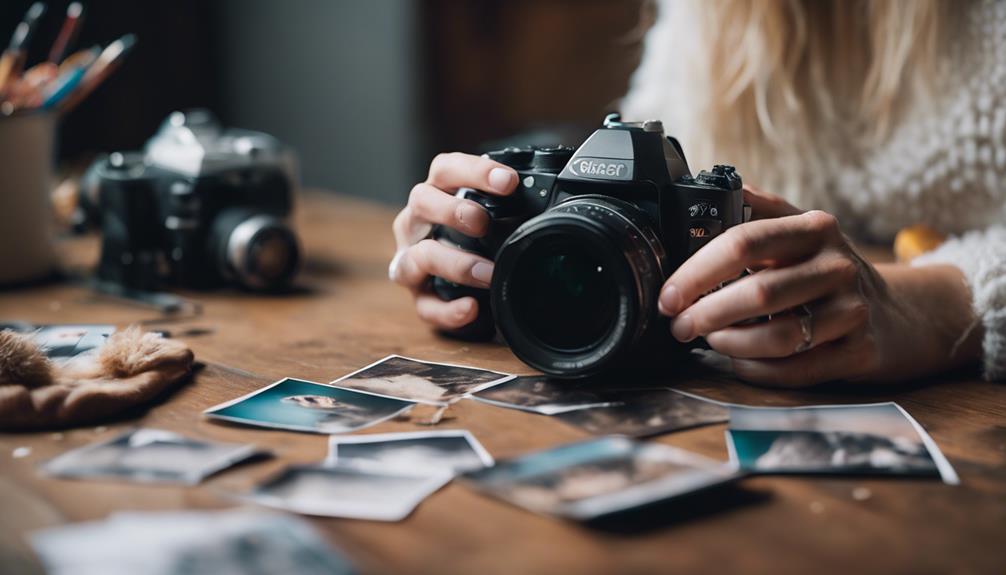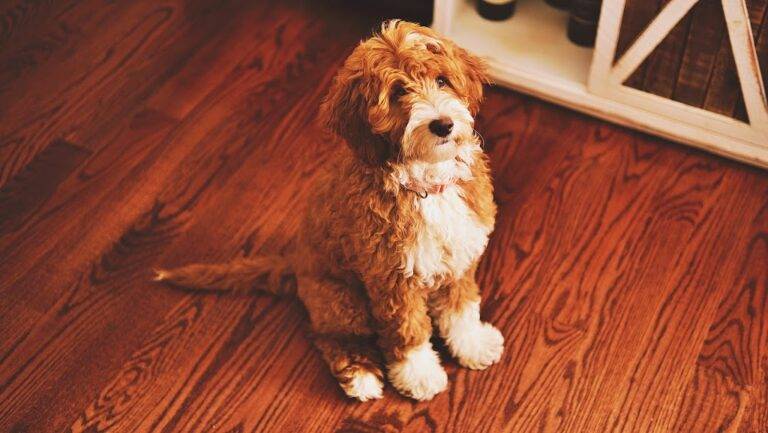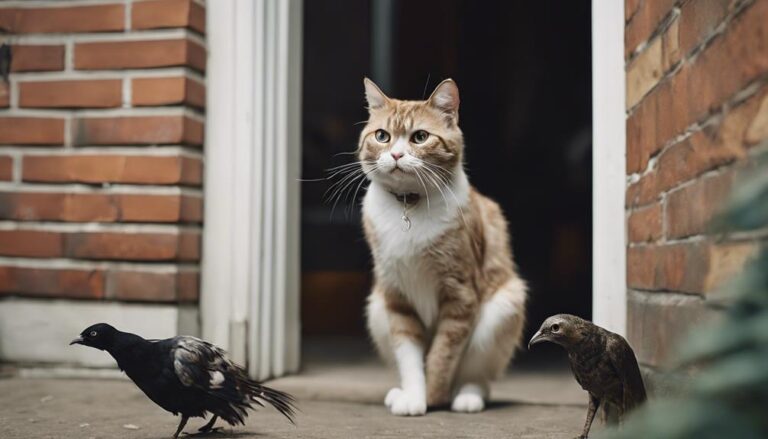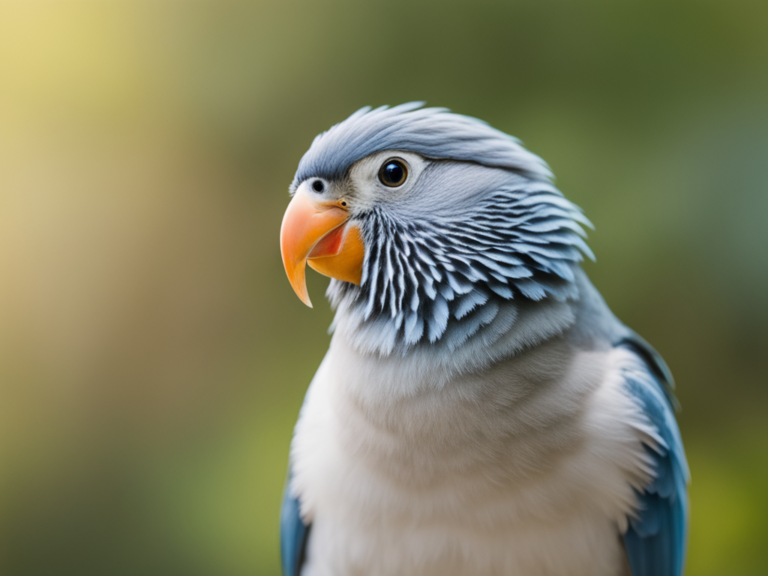To establish a successful pet photography career, focus on setting your unique style and vision. Capture diverse pet personalities and traits to showcase your talents. Experiment with various lighting techniques and editing skills to enhance your portfolio. Scout locations that complement your subjects to add depth to your work. Keep your editing style consistent for a cohesive look. Diversify your portfolio by incorporating storytelling elements and unique styling. Showcasing versatility is key. Each pet presents an opportunity to capture something special. Master these techniques to showcase your skills effectively. Your portfolio will speak volumes about your talent and creativity.
Setting Your Photographic Vision
To establish your unique style in pet photography, begin by envisioning the specific emotions and atmosphere you aim to capture in your images. Developing your style is a process that involves finding inspiration from various sources. Look at other pet photographers' work, study different photography styles, and explore art forms beyond photography. By immersing yourself in diverse creative outlets, you can discover what resonates with you and incorporate those elements into your own work.
Finding inspiration for your pet photography can come from unexpected places. Take a walk in nature, visit a local animal shelter, or observe your own pets in their natural environment. Pay attention to the interactions between animals and their surroundings, the emotions they convey, and the unique characteristics that make them special. These observations can spark ideas for your photography sessions and help you create images that stand out.
Experiment with different lighting techniques, angles, and compositions to see what best captures the emotions and atmosphere you want to convey in your pet photography. Don't be afraid to think outside the box and try new things. Your unique perspective and creative approach will set your pet photography apart and attract clients who appreciate your distinctive style.
Choosing the Right Subjects
When selecting subjects for your pet photography portfolio, consider the animals that showcase a diverse range of personalities and characteristics. Pet personalities play an important role in creating engaging and interesting photographs. Look for pets that are playful, curious, shy, or energetic to add variety to your portfolio. Each animal has its unique traits that can bring allure to your images, so aim to capture a mix of these qualities.
In addition to pet personalities, location scouting is essential for choosing the right subjects. The environment where you photograph the pets can greatly impact the overall look and feel of your images. Scout for locations that complement the animals you are photographing. For example, if you are capturing a lively and energetic dog, a park or a beach setting would be ideal to showcase its playful nature. On the other hand, a calm and relaxed cat might be best photographed in a cozy indoor setting with soft lighting.
Mastering Lighting Techniques
Consider experimenting with different lighting techniques to enhance the mood and visual appeal of your pet photography portfolio. Lighting plays an important role in capturing stunning pet photos, so mastering the use of natural vs artificial lighting can greatly elevate the quality of your work.
When working with natural lighting, take advantage of the soft, diffused light during the golden hours of sunrise and sunset for a warm and gentle look in your outdoor pet photography sessions. On the other hand, artificial lighting, such as strobes or continuous lights, can offer more control over the lighting conditions in studio photography settings. Experiment with different angles and intensities to create various moods and highlight your furry subjects.
Outdoor photography allows you to incorporate the beauty of natural surroundings into your pet portraits, adding depth and context to your images. Conversely, studio photography provides a controlled environment where you can manipulate lighting to achieve a specific aesthetic. Understanding the nuances of lighting in both outdoor and studio settings will give you the versatility to adapt to different shooting conditions and deliver exceptional pet photos consistently.
Showcasing Your Editing Skills
Enhance your pet photography portfolio by showcasing your editing skills through precise adjustments and creative enhancements. When it comes to pet photography, editing plays an essential role in bringing out the best in your images. Here are three key ways to highlight your editing skills effectively:
- Utilize Enhancing Techniques: Experiment with various enhancing techniques such as sharpening, noise reduction, and clarity adjustments to make your pet photos more visually appealing. Enhancing techniques can help you refine details, improve texture, and overall elevate the quality of your images.
- Master Color Correction: Color correction is vital in pet photography to insure that the fur, eyes, and surroundings appear true to life. Use tools like white balance adjustments, saturation control, and selective color editing to correct any color discrepancies and create a harmonious color palette in your photos.
- Maintain a Consistent Style: Developing a signature editing style can set your pet photography portfolio apart. Whether you prefer vibrant and bold edits or soft and muted tones, consistency in your editing style helps create a cohesive look throughout your portfolio, making it more visually appealing and memorable to potential clients.
Creating a Diverse Portfolio
To captivate a wider audience and showcase your versatility, diversify your pet photography portfolio with a range of subjects, settings, and styles. Start by capturing different pet personalities to highlight the unique traits and characteristics of each animal. Whether it's a playful puppy, a regal cat, or a majestic horse, showcasing a variety of pets will demonstrate your ability to work with different subjects effectively.
Experiment with styling to add a creative touch to your portfolio. Incorporate props, costumes, or accessories that complement the pets' features and personalities. This attention to detail in styling can elevate your images and make them stand out to potential clients.
Location scouting plays an essential role in diversifying your portfolio. Explore various settings such as parks, beaches, urban landscapes, or even clients' homes to provide a diverse backdrop for your pet photography. Different locations can add depth and interest to your portfolio, showcasing your ability to adapt to different environments.
Lastly, storytelling through your images can set your portfolio apart. Capture moments that evoke emotion, convey a narrative, or simply tell a heartwarming story about the bond between pets and their owners. By incorporating storytelling elements into your portfolio, you can engage viewers and leave a lasting impression.
Frequently Asked Questions
How Can I Attract Clients and Build a Strong Reputation as a Pet Photographer?
To attract clients and build reputation as a pet photographer, maintain an engaging social media presence for marketing. Communicate effectively with clients to guarantee satisfaction. Consistent quality work and positive interactions will help establish credibility.
What Are Some Tips for Networking and Collaborating With Other Pet Industry Professionals?
To network effectively and collaborate with pet industry professionals, attend networking events to meet potential partners. Utilize social media outreach to connect with industry connections. Look for collaboration opportunities to expand your reach and grow your pet photography business.
How Important Is It to Stay Updated on the Latest Trends and Techniques in Pet Photography?
Staying current on trends and techniques in pet photography is essential. Up-to-date knowledge on editing software and lighting techniques enhances your skills. Engaging on social media and maintaining an online presence helps showcase your work effectively.
Can You Provide Insights on Pricing Strategies and Negotiating Contracts With Clients?
When setting prices for your services, consider factors like your experience, market demand, and the value you bring. In negotiating contracts with clients, be clear about terms, communicate openly, and focus on finding a win-win solution.
How Do You Handle Challenging or Unpredictable Situations During Pet Photoshoots?
When handling unpredictable situations during pet photoshoots, stay calm and focused. Use calming techniques like gentle petting or soothing sounds. For uncooperative subjects, get creative with treats, toys, or a change of scenery to capture those perfect moments.
Conclusion
Now that you have built a diverse portfolio for your pet photography career, it's time to showcase your skills and attract potential clients. Remember to stay true to your photographic vision, choose the right subjects, master lighting techniques, and showcase your editing skills. With a strong portfolio, you'll be able to stand out in the competitive world of pet photography and start booking more clients. Good luck on your journey to success!









